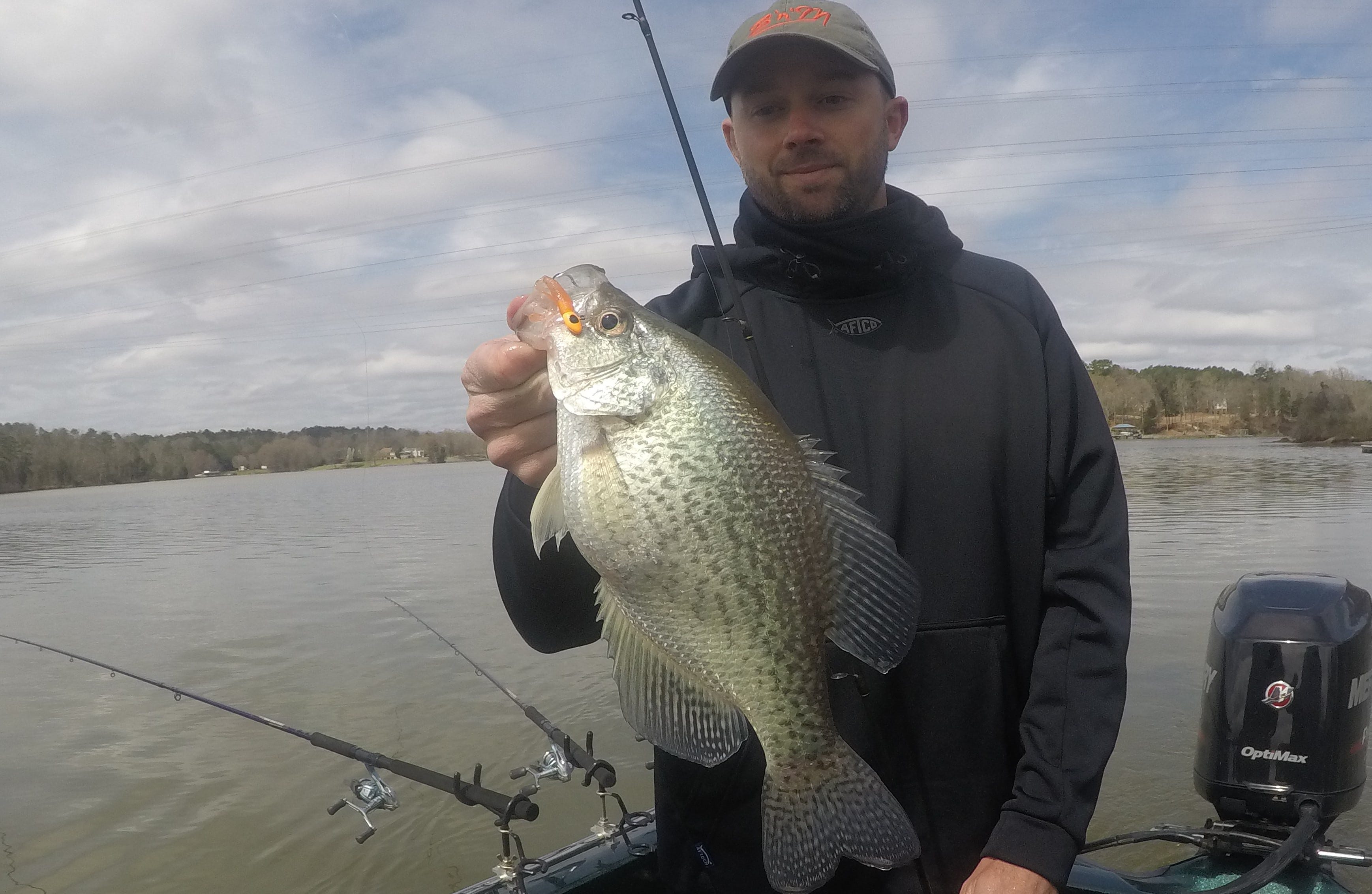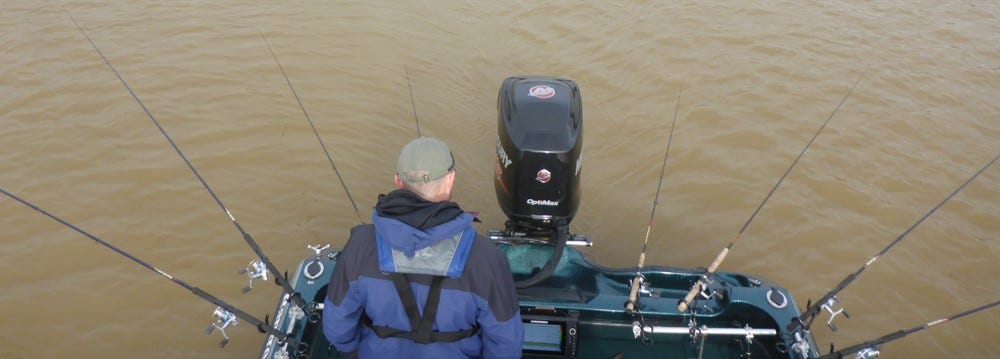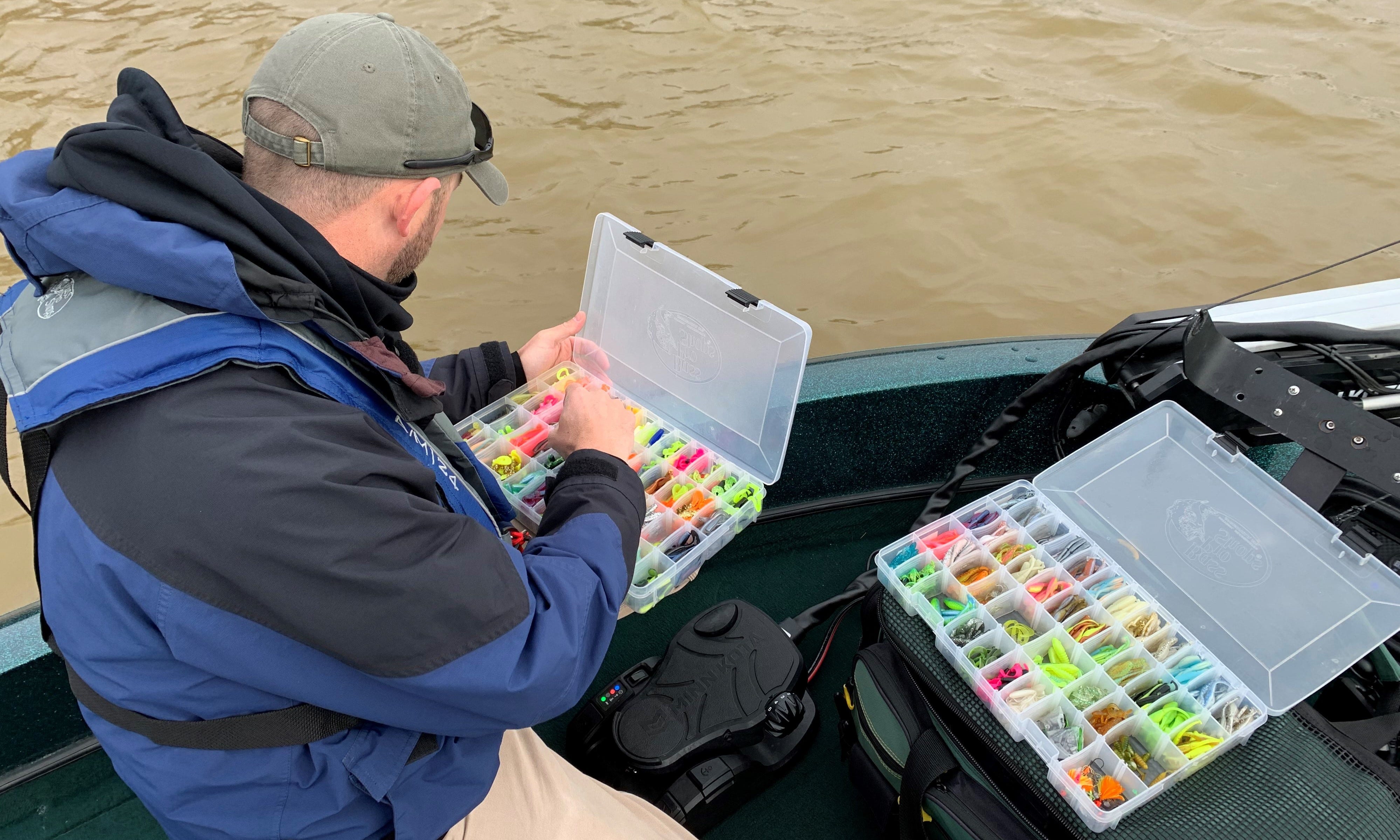- Apr 7, 2021
Strategies for Finding Spring Crappie
Learn how to methodically search for and find spring crappie that are on the move and then effectively pattern their behavior.
“I haven’t been to Wylie for two months, so we will be figuring it out as we go,” Jordan Newsome told me while confirming the following day’s plans. Flooding on other waters had limited options for our planned photo outing, but he was confident that he and his father, Craig (who is his current tournament partner) would be able to find plenty of crappie for a productive day.
A tournament crappie angler from Iron Station, North Carolina, Newsome specializes in long-line trolling with jigs. Trolling, by nature, is a searching strategy. However, simply casting back baits at the first opportunity and hoping to cross the fish’s path can be highly hit-or-miss.
Newsome does the opposite. He is systematic in his crappie trolling approach, from starting areas to the way he sets up his trolling spread. Several elements of his approach accelerate the process of finding spring crappie and figuring out their preferences that day. That equates to more dialed-in fishing time, which ultimately results in catching more fish (and often better fish).
Starting Points


It was late March, and we were fishing in a Southern reservoir, so there was little question that we would be fishing in creek arms. Crappie move up creeks to spawn during spring, so that’s where the best concentrations are found this time of year. Less certain, if you haven’t been on a lake of late and don’t have good third-party information, are which creeks are holding the most fish, how far up the creeks the crappie have moved and what depths they are using.
We made a modest run from the boat ramp before Newsome turned into a creek arm, rode a short distance in, slowed the boat and began watching his electronics for bait and crappie while continuing toward the back of the creek. I would have assumed Newsome had chosen a traditional favorite creek to begin or simply one that was close to the ramp, but his choice was more strategic than that.
“This is a fairly small creek that doesn’t go way back,” Newsome explained. “We like to begin with a smaller creek because we can cover the entire creek much faster, and that helps in figuring out how far back the fish are in the creeks.”
Crappie aren’t always the same distance back in every creek, but on most spring days, if they are 2/3 of the way back in one creek, there’s a good chance they’ll be a similar distance back in a nearby creek, so that is valuable information to gather early.
The creek where we began was approximately midway down the lake, which was also intentional. Like a lot of reservoirs, Lake Wylie has more shallow water and tends to carry more stain in its upper end. Upper end creeks warm a bit faster, so the crappie in those creeks tend to be a bit ahead of fish farther down the lake. Starting near the middle gives Newsome a middle-of-the road gauge.
The Approach


Newsome begins by riding as far back into a creek as he would want to fish so he can troll back out, and he watches the graph carefully on the way in to determine the amount of bait and crappie and where they seem to be the most concentrated. He notes the color and temperature of the water and watches whether those things change as he goes back into the creek and also watches the surface for signs of baitfish. Once he turns, Newsome might begin fishing at the very back or backtrack some before putting out lines, depending on what he has seen.
Newsome has his graph color coded, so everything shallower than where he intends to fish is colored red. That provides a quick visual, and there’s no reason to continue up a creek once he reaches the red zone. On that day, he had 0 to 12 feet set red.
Where state regulations and tournament rules allow, Newsome trolls with ten lines. He has three rods in holders along each side of his boat, all near the back, and four rods extended off the back. The front rod positions get the longest rods (18 feet). The back, center rods are the shortest at 9 feet. Newsome’s boat is 7 feet wide so that set-up spreads his trolling lines to cover a 42- to 44-foot swath as he fishes.
Aiding the fish-finding process, Newsome uses three different weights of jigheads – 1/8- 1/16- and 1/24 ounce – to work three different levels of the water column. Using 4-pound test and trolling at 1 mile per hour, those jighead weights allow him to cover water from 4 to around 14 feet at the same time. He always uses the same jighead weights for the same rod positions, so he knows whether the shallow, medium or deep offerings are getting bit.
Putting it Together


As Newsome fishes, he keeps an eye on his graph and notes how on-screen observations correlate with the action. If he’s seeing a lot of fish but is not getting bit, that suggests it is time to alter body styles or colors on some of his lines. Similarly, if most fish are shallow but he’s getting most of his bites on the deeper jigs, he’ll make changes with the baits on his shallow lines to make them more like the ones that are getting bit.
Every fish caught reveals something, but repeated catches on the same line begin painting a picture. “Two fish make a pattern,” Newsome said with a smile.
Important variables, which Newsome experiments with as part of the patterning process, include bait style, bait color and jighead color. His crappie baits of choice for most long-line trolling applications are the Bobby Garland Hyper Grub, Stroll’R, Slab Hunt’R and Baby Shad Swim’R. Each has a different profile and degree of aggressiveness. At times the crappie clearly favor one over the rest. Other times, all work, but a specific color our couple of colors seem to make all the difference.
Newsome uses Crappie Pro Mo’ Glo Jigheads, which come in five different colors, and he keep a full arsenal handy and changes head colors regularly, having found that to be a very important factor some days.
Water color is another important spring variable, and something Newsome pays careful attention to as he fishes. There isn’t one ideal color of water in his mind. However, the color makes a very large difference in the positioning of the fish, their aggressiveness and which colors they favor, so it is another factor he pays close attention to as he fishes.
Some of Lake Wylie’s creeks remained dirty from storms a few days earlier, while others were moderately clear or quite clear. After leaving one dirty and fairly productive creek, we moved into a creek that was strikingly clear, despite being not far away. Newsome surveyed the entire creek with his electronics and didn’t bother putting out a trolling spread before moving along because he saw so little indication of bait or crappie.
Fishing action was similarly good in the dirtiest creek and in the moderately stained ones, but bait color preferences differed, and in creeks that were more stained at one end than the other, the bait was more plentiful and the fish more active in the more stained portions.
It was fun beginning the day with zero knowledge of what the fish had been doing – only an understanding of normal spring crappie behavior – and watching as the Newsomes worked methodically to figure out where the fish were in the creeks, how deep they were and what baits they wanted most.
The end result was a highly productive day of catching spring crappie and an advanced lesson on how to find the fish!



